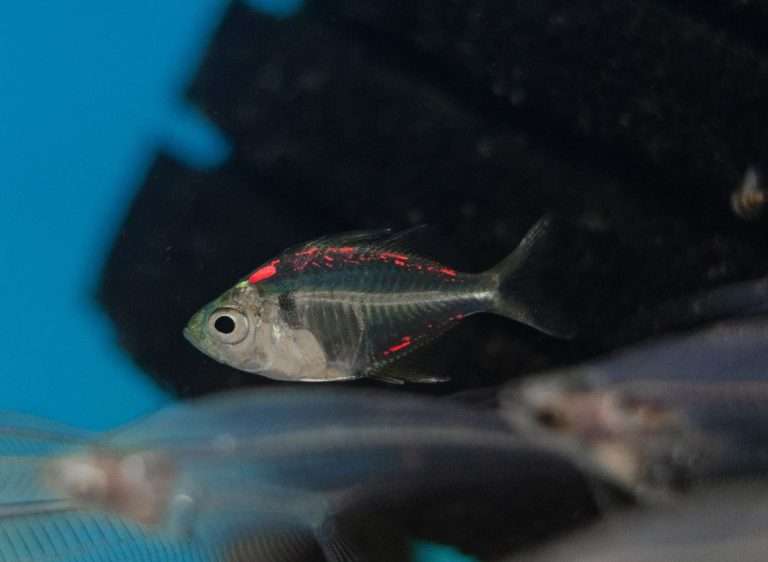
Size
80 mm
Physical Characteristics
The body of the Indian glassy fish is incredibly translucent, exposing its internal organs and bones, while the dorsal fin of the male acquires a black edge.
Temperament
Although the water conditions (freshwater or somewhat brackish) will determine which partners are ideal, this species is peaceful and somewhat shy and can be kept with other fish of similar size and temperament.
Habitat
In addition to inner estuaries, impoundments, rivers, lakes, marshes, and streams, the Glass Fish is known from a variety of other sluggish or standing, densely vegetated, lowland environments. These habitats are primarily freshwater, but some are somewhat brackish.
Keeping as Pet

- Tank Size
Its square area, not its capacity or length, is a crucial tank parameter for Indian glass fish. The tank’s height is then limited to 20 cm (8 in). A tank volume of 60 litres or more is advised. Two sections are required: the first is for the fish to swim in, and the second must be poorly planted and equipped with shelters because the fish are somewhat afraid.
- Water Conditions
There are no specific water quality requirements for Indian glassfish. Its primary variables, pH 6,5-8,5 (better, not above 7,5), general hardness 8–25 °dGH (10–12 ° is ideal), and water temperature between 23 and 26 °C, can all vary quite a little. Further needed are water filtering, aeration, and weekly refilling of one-third of the tank content.
Since the fish are quite sensitive to changes in the settings, stability rather than quantitative features are what matter at this point. It is therefore preferable to place them in a tank with a stable biotic balance.
- Feeding
Wild Indian glass fish eat a variety of spineless species, including worms, crabs, shellfish, and maggots. When kept in a tank, fish enthusiastically consume high-quality dry foods that, in contrast to live and frozen foods, are perfectly balanced, contain useful ingredients, and pose no threat of contaminating the tank.
It is advisable to use food that is afloat or that gently descends into the water because fish prefer to feed in the upper and middle levels of the water.
- Tank mates
Any small, calm fish can be the tank mates for Indian glass fish. So, choosing tankmates for them in a communal tank is not a problem. Because of their extreme timidity and calmness, these fish cannot be housed with other species of large, aggressive fish.
Glass fishes will make excellent tank mates for harlequin rasbora, white cloud mountain minnow, zebra danio, glittering gourami, dwarf pencilfish, rummy nose tetra, and dwarf gourami.
Glass fish will also enjoy the companionship of peaceful catfish, such as the hoplo catfish, Corydoras julii, otocinclus catfish, and panda cory. Amano shrimp, glass shrimp, and cherry shrimp are also safe for shrimp. Guppy fish, molly fish, and bumblebee goby make good tank mates for Indian glassfish since they can easily withstand brackish water conditions.
Table





